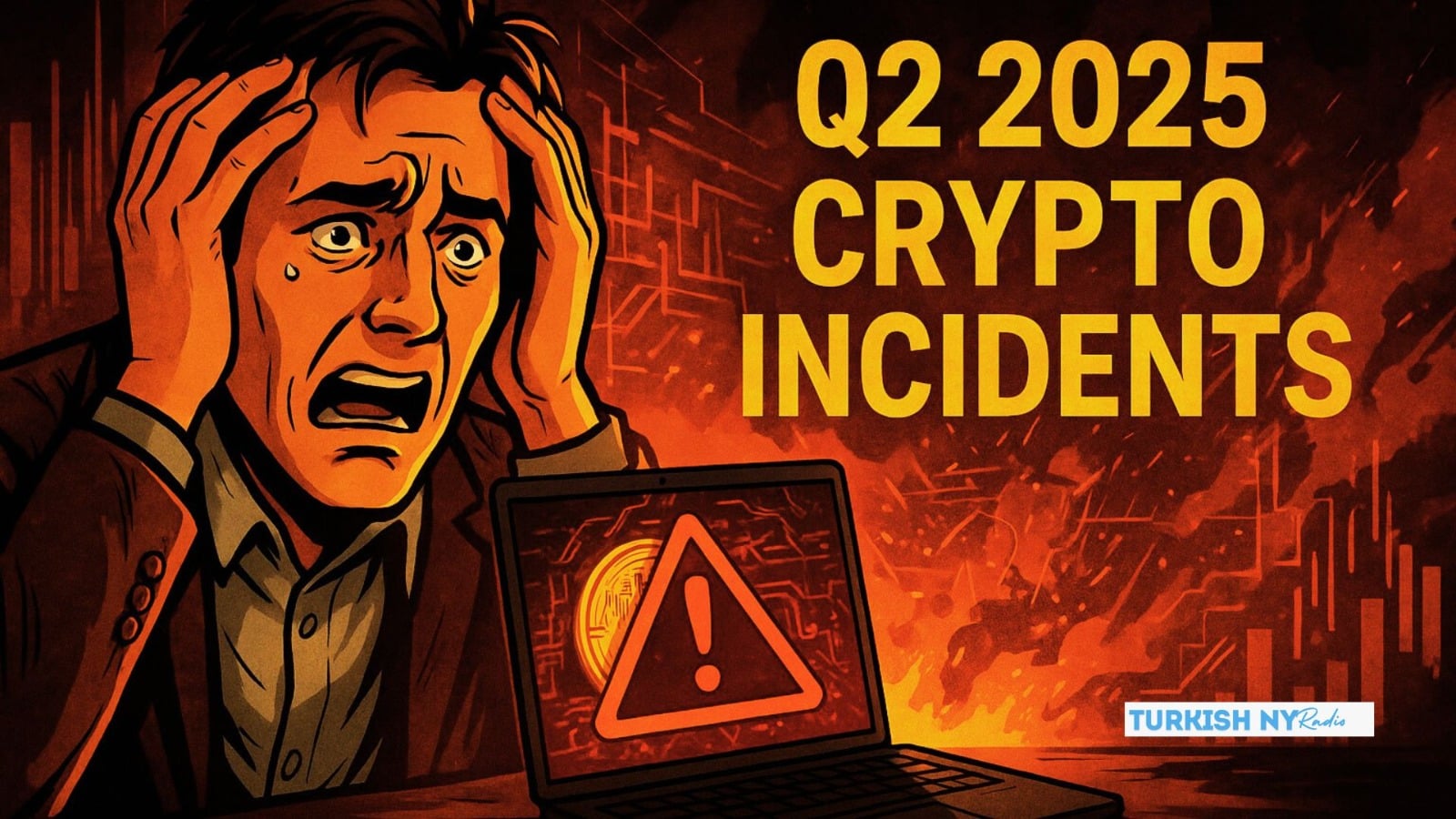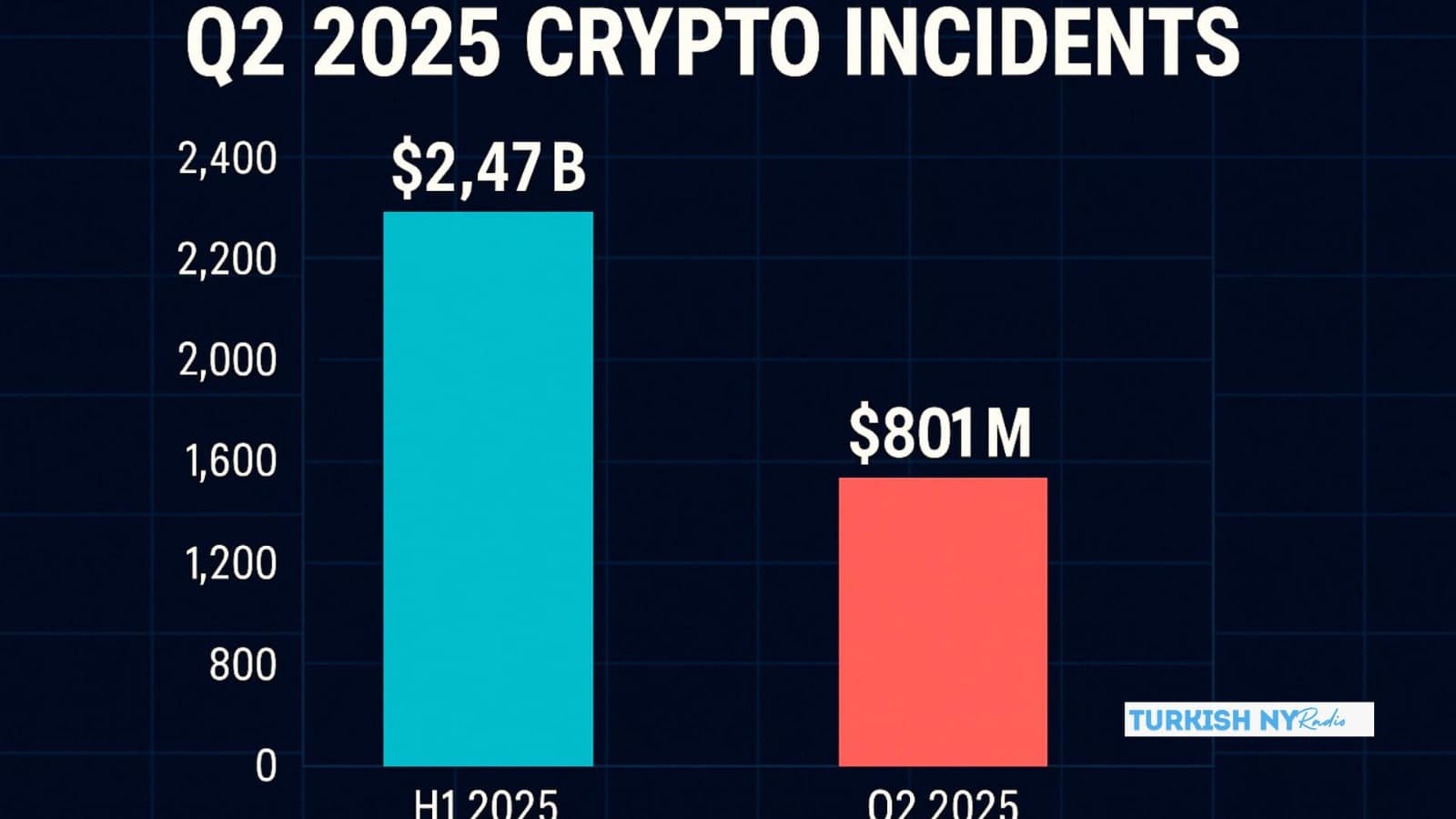It’s a nightmare no one wants to live through, yet for hundreds of users, this was the harsh reality during Q2 2025 crypto incidents.
While the numbers show a surprising silver lining, hacks dropped significantly compared to Q1, the total losses still crossed $800 million. The crypto space isn’t out of the woods yet, but signs suggest that security efforts and smarter user behavior are finally starting to slow down the attackers.
Half‑Year Losses and the Q2 Shift
Blockchain‑security firm CertiK tallied Q2 2025 crypto incidents at 144, versus 203 in Q1, with total H1 losses hitting $2.47 billion across 344 events. Net of the $187 million frozen or returned, the industry is still licking $2.29 billion in wounds, already outstripping 2024’s full‑year tally. “Wallet compromise remains the costliest vector,” Xu noted, pointing to $1.7 billion lost in just 34 breaches.
Two Giant Exploits Skew the Picture
Strip away the Bybit cold‑wallet raid ($1.5 billion) and the Cetus Protocol exploit ($225 million), and the monetary impact of Q2 2025 crypto incidents drops to roughly $75 million, closer to pre‑bull‑market norms. Still, their sheer scale fuels headlines and underscores how a single missed configuration can sink even marquee platforms.
“One slip in key‑management hygiene can dwarf hundreds of smaller hacks,” ,. CertiK Hack3d, Q2 2025
Wallet Compromise & Phishing Dominate
Beyond those blockbusters, everyday users remain prime targets. Q2 2025 crypto incidents attributed to phishing totaled 132, draining $410 million. Meanwhile, wallet‑compromise events averaged a staggering $50 million each. “Never paste your seed phrase into a browser extension, ever,” SlowMist COO Cos Sun warned during a recent X Spaces AMA. Ethereum, with 70 Q2 attack cases, stayed the most‑targeted chain.
Recent X on The Topic
CertiK’s Official Announcement
CertiK’s verified X account posted a summary of their Hack3d report:
“The Q2 + H1 2025 Hack3d Report is here. $2.47B lost in the first half of the year. $801M lost in Q2 alone. Phishing and wallet compromise dominated the threat landscape.”
x.com
Context From Crypto-News Site
A Cryptonews.com tweet summarized key findings:
“The funds stolen in the Bybit hack are on the move , and investigators have a clearer idea of how the $1.4 billion in crypto was stolen #Bybit #LazarusGroup”
cryptonews.com
Regulators and Builders Respond
Regulators are keen to blunt future Q2 2025 crypto incidents. In Washington, the SEC under President Trump is drafting custody‑segregation rules designed to give exchanges clearer guardrails. In Europe, MiCA, live since Dec 30 2024, already mandates incident‑response disclosures within 24 hours.
Hong Kong’s new Stablecoin Ordinance likewise sets hot‑wallet loss caps. Exchanges have reacted by beefing up bug‑bounty pools and spinning up joint threat‑intel channels, a move Jing Xu calls “the fastest way to shut down laundering routes.
Conclusion
Yes, total losses remain sobering, but the steep fall in dollar damage and case count suggests smarter defenses are biting. If the industry can sustain rapid forensics, wider cold‑storage adoption and tighter user education, the worst of Q2 2025 crypto incidents may go down as an inflection point rather than a prelude to bigger carnage.
Summary
Q2 2025 crypto incidents saw 144 hacks, scams and exploits that stole $801 million, , down 52% from Q1. Combined H1 losses hit $2.47 billion, but two mega‑heists (Bybit and Cetus) skewed that figure, accounting for 72% of the total. Wallet compromises remained the priciest vector, while phishing was most common. Regulatory tailwinds, from the SEC, MiCA and Hong Kong, plus quicker cross‑exchange cooperation helped freeze $187 million. Sustained vigilance, hardware wallets and thorough smart‑contract audits are still the best lines of defense. (84 words)
FAQs
1. What distinguishes Q2 2025 crypto incidents from previous quarters?
A 52 % drop in total value lost and 59 fewer hacks point to quicker incident response and stronger exchange coordination.
2. Which blockchains were hit hardest?
Ethereum led Q2 2025 crypto incidents with 70 attacks, far ahead of Sui, Solana and BNB Chain.
3. How much money was recovered?
Roughly $187 million, about 7.5 % of gross H1 losses, was frozen or returned through law‑enforcement action and on‑chain tracing.
4. Are wallet hacks still the biggest threat?
Yes. Despite representing just 34 of 344 cases, wallet compromises swallowed $1.7 billion, dwarfing every other category.
5. What can users do right now?
Use hardware wallets, verify URLs, enable multi‑factor authentication and limit hot‑wallet exposure during volatile news cycles.
Glossary
Cold Wallet — An offline device or paper method that stores private keys, isolating them from internet threats.
Phishing — A social-engineering scheme tricking users into revealing credentials or signing malicious transactions.
MiCA — Markets in Crypto‑Assets regulation, the EU’s comprehensive crypto framework, effective December 2024.
Attack Vector — The specific technique or route a hacker uses to breach a system.
Bug Bounty — A reward program encouraging ethical hackers to disclose vulnerabilities responsibly.













































































































